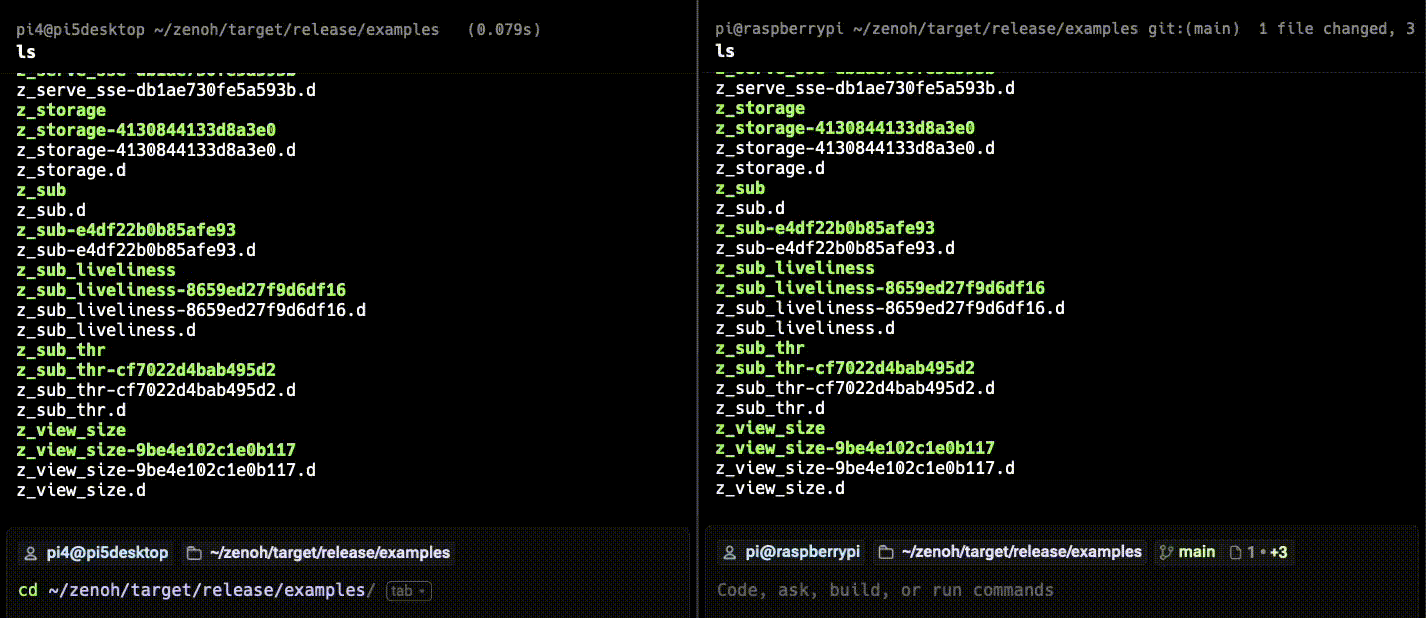Build and deploy multi-node Zenoh systems on Raspberry Pi
Introduction
Build scalable communication systems with Eclipse Zenoh
Get started with Zenoh on Raspberry Pi and Arm Linux
Containerize and deploy Zenoh across multiple Raspberry Pi devices
Run a simple Zenoh pub/sub example
Run a Zenoh storage and query example
Run a Zenoh queryable node for on-demand edge computation
Run a Zenoh queryable with parameterized Rust computation
Next Steps
Build and deploy multi-node Zenoh systems on Raspberry Pi
Introduction
Build scalable communication systems with Eclipse Zenoh
Get started with Zenoh on Raspberry Pi and Arm Linux
Containerize and deploy Zenoh across multiple Raspberry Pi devices
Run a simple Zenoh pub/sub example
Run a Zenoh storage and query example
Run a Zenoh queryable node for on-demand edge computation
Run a Zenoh queryable with parameterized Rust computation
Next Steps
Test Zenoh pub/sub across two devices
This example demonstrates how to use Zenoh’s real-time publish/subscribe model to exchange messages between two Raspberry Pi devices over a local network.
Pub/sub is a core Zenoh communication pattern where data producers (publishers) send values to a key, and data consumers (subscribers) receive updates for matching key expressions. In this case, the subscriber listens for all messages published under the key expression demo/example/**, which matches any topic that begins with demo/example/. This enables flexible topic filtering and lightweight data dissemination across distributed systems.
Start the subscriber node
Run the subscriber example on one of the Raspberry Pi systems:
cd ~/zenoh/target/release/examples
./z_sub
Start the publisher node
Then, log in to the other Raspberry Pi and run the publisher:
cd ~/zenoh/target/release/examples
./z_pub
You can run both z_sub and z_pub on the same device for testing, but running them on separate Raspberry Pis demonstrates Zenoh’s distributed discovery and cross-node communication.
Observe the pub/sub data flow
The results are shown below:
 Simple Pub/Sub
Simple Pub/Sub
The left-side window shows the z_sub program. It receives values with the key demo/example/zenoh-rs-pub continuously published by z_pub running in the right-side window.
This example confirms that Zenoh’s zero-configuration peer discovery and real-time pub/sub communication are working correctly across physical nodes.